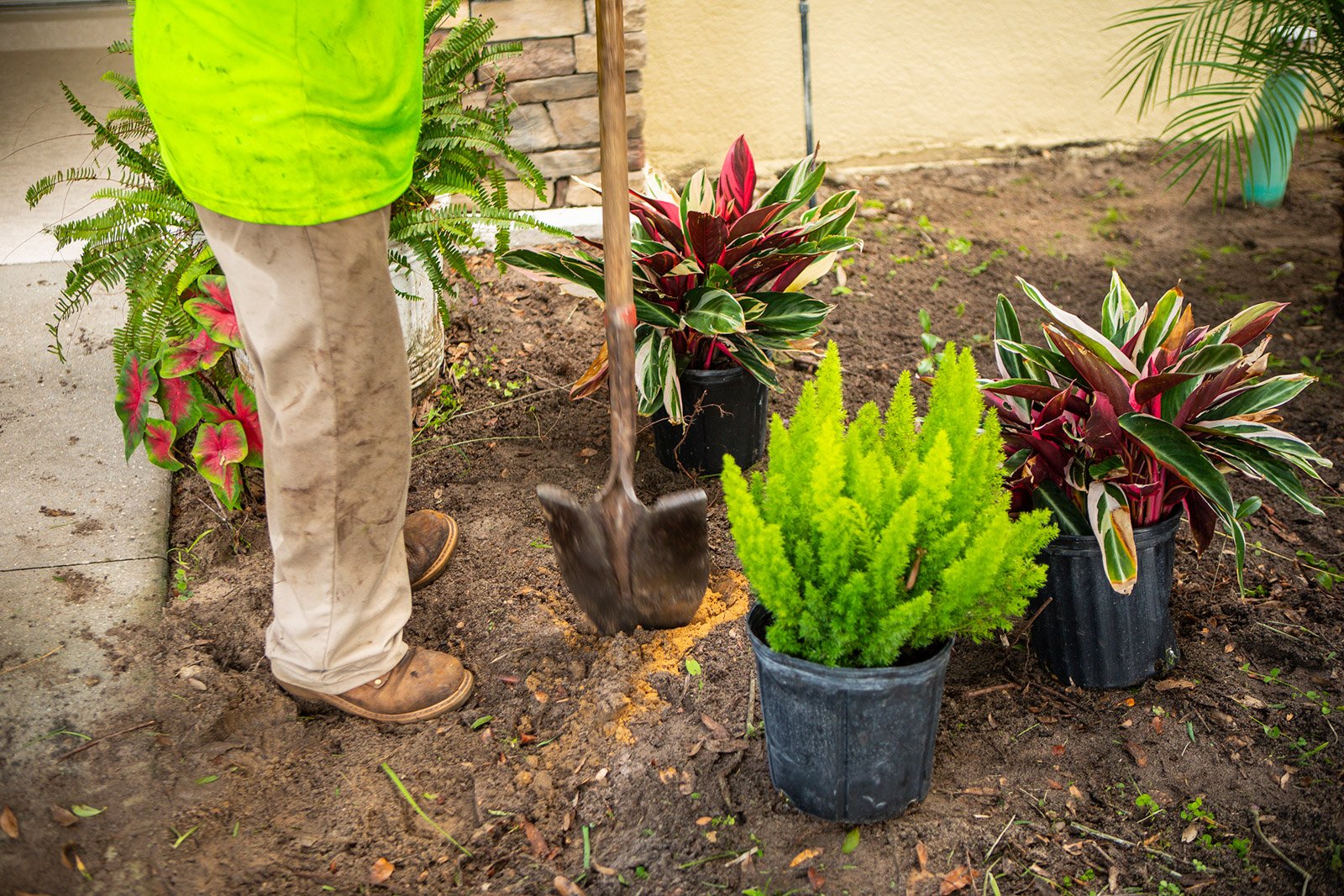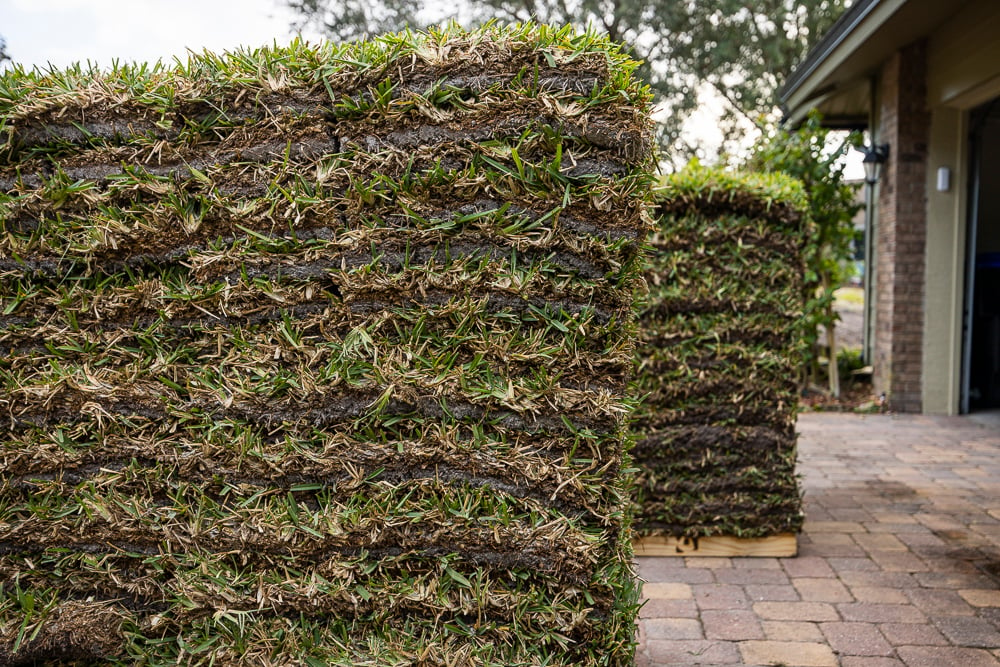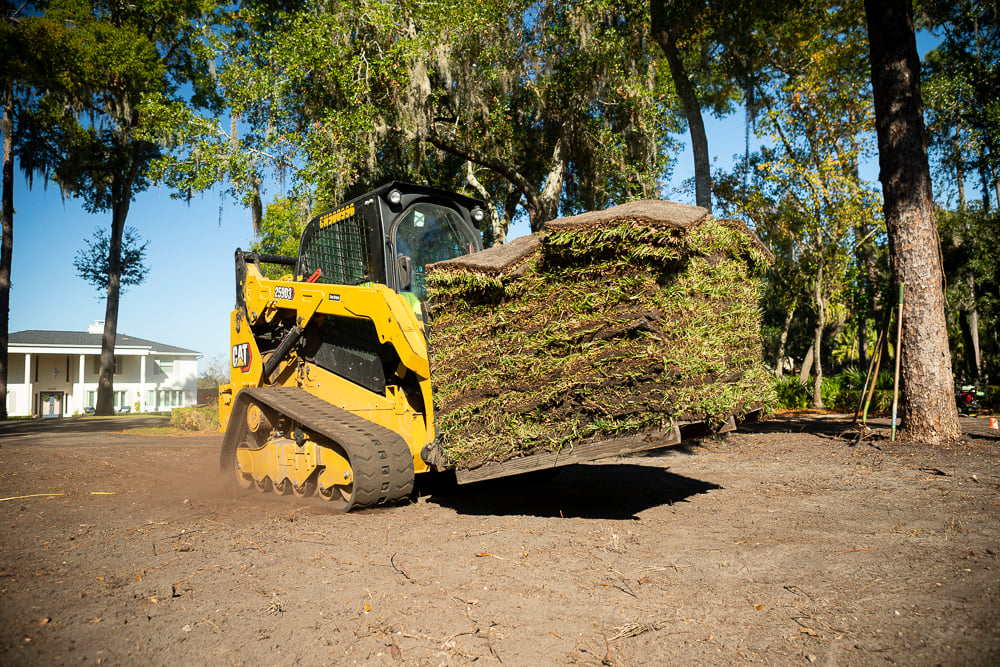Your new sod lawn is installed, and your Florida yard has never looked better.
But before you start sending out invitations to that backyard barbecue, be sure you know how to care for your beautiful new lawn for the first few weeks.
After all, you just made a big investment, and you have big plans for your impressive new yard. You need to know how to keep your sod alive.
New sod care is crucial. Here are new sod care instructions to always keep in mind.
Watering New Sod: Super Important
Water is the single most important step to keeping your new sod alive and thriving.
It’s really thirsty.

Make sure water reaches every area of your lawn. Sprinklers sometimes miss edges and corners, making these spots dry out faster than the center of the lawn.
Keep in mind that areas of sod near buildings, concrete, and asphalt will typically dry out faster due to reflected heat and may need additional water.
Water too little, and your new sod will wilt and die. Roots dry out quickly, and gaps can appear if the sod loses moisture after installation, causing the pieces to shrink.
Water too much, and disease will set in.
Sound confusing?
Below are detailed instructions for watering new sod in Florida that come from our sod care guide.
You’ll know what times to water, for how long, and even which of your irrigation heads to use for what amount of time.
The instructions for watering new sod vary, depending on what type of grass, what time of year your sod is installed, and if it's planted in sun or shade.
Follow these instructions on how to water sod:
- Days 1-7: Water two times daily at 7 a.m. and 1 p.m., 30 minutes with rotor-type sprinkler heads; 15 minutes with sprayer heads; and 45-60 minutes with MP Rotator nozzles, or equivalent. We like Hunter’s MP Rotator nozzles that feature multi-trajectory rotating streams that deliver water at a steady rate.
- Days 8-15: Eliminate the 1 p.m. watering schedule and only water at 7 a.m — 45 minutes with rotors; 20 minutes with sprayers; and 60-75 minutes with MP Rotators or equivalent.
- Days 16-22: Reduce watering to four times per week and change the start time to 1 a.m. Run rotors at 50-60 minutes; sprayers for 25-30 minutes; MP Rotators or equivalent at 60-90 minutes.
- Days 23 and on: Eliminate one day per calendar week until you eventually get to two days per week watering.
You get the idea. Our instructions for watering new sod will answer all your questions.
Fertilizing New Sod
A starter fertilizer will encourage your new sod’s roots to get established.
Fertilizing new sod will strengthen the roots. The more durable the turf, the less susceptible the grass will be to disease and insects.
Remember, fertilizing doesn't stop here. Plan to continue feeding your lawn throughout the year to keep it healthy.
Preventing Insects, Weeds and Disease After Sod Installation
Your new sod is getting a lot of water at first as it gets established, and that extra moisture can make it susceptible to fungus.
Apply a systemic and curative fungicide within seven days of your sod installation. An insecticide at this time is a good idea, too.
What about weeds in new sod? Weeds can’t really be controlled during the first few weeks, as weed control products can damage new turf. Weeds are also a natural consequence of the extra water new sod needs, so you’re going to see a few weeds.
Reducing watering according to the schedule we provide, and mowing as soon as you’re able to will help prevent weeds.
Stay off The Grass
You can walk on your new sod lawn, but avoid any heavy traffic right away. No construction, wheelbarrows, or soccer games until it gets established after a few weeks.
You don’t want the fragile root system to tear before it’s fully established. Good sod care after installation gives you a better chance of a thriving lawn later on.
Mowing New Sod
Love mowing? You’ll have to wait a bit.

Mow as soon as you're able to tug on the grass and it feels “tacked” to the ground. This usually happens after about two weeks in the summer and four weeks in the winter.
If the sod isn't starting to tack after this amount of time, that likely means it’s getting too much water.
When you mow for the first time, go easy — don’t cut more than one-third of the length the first time. Don’t leave excess clippings on the ground. Bagging them is best for your new lawn. If that isn’t an option, then rake up the clippings.
New Sod Care: When Problems Pop Up
Keep an eye on your new sod lawn as it gets established.
Watch for signs of chewing or browning — this could mean you have fungus, webworms, or your lawn needs more water.
Don't assume your lawn is dry if it’s turning brown. It might be infested with sod webworms, pests that lay their eggs in the grass. When they hatch, the larvae devours your grass.
If you start watering more, assuming it’s dry, the excess water could cause your sod to rot.
Need help diagnosing the problem? Give us a call.
New Sod Care: What's Your Warranty?
Not every installer does, but we warranty sod for 30 days during certain times of the year, as long as customers adhere to our post-care requirements, which include treatment with a starter fertilizer, an approved insecticide, and an approved fungicide, as well as following our watering instructions. Some restrictions apply.
Get the Best New Sod Care Tips From Ground Source in Central Florida
You want your new sod to thrive. That’s what we want, too.
That’s why we provide you with all the information you need to take great care of your fresh, healthy, beautiful sod lawn.

We’re sod experts, but our skills don’t stop there.
We’re with you every step of the way as you plan your perfect outdoor space.
Sod, irrigation, landscape design: Let us transform your yard from an embarrassing eyesore to a place you spend every spare minute.
Are you ready to enjoy the vibrant, impressive yard you've always wanted? Request a quote today! We’ll help you review your options and then transform your property.
Image source: lawn mower









